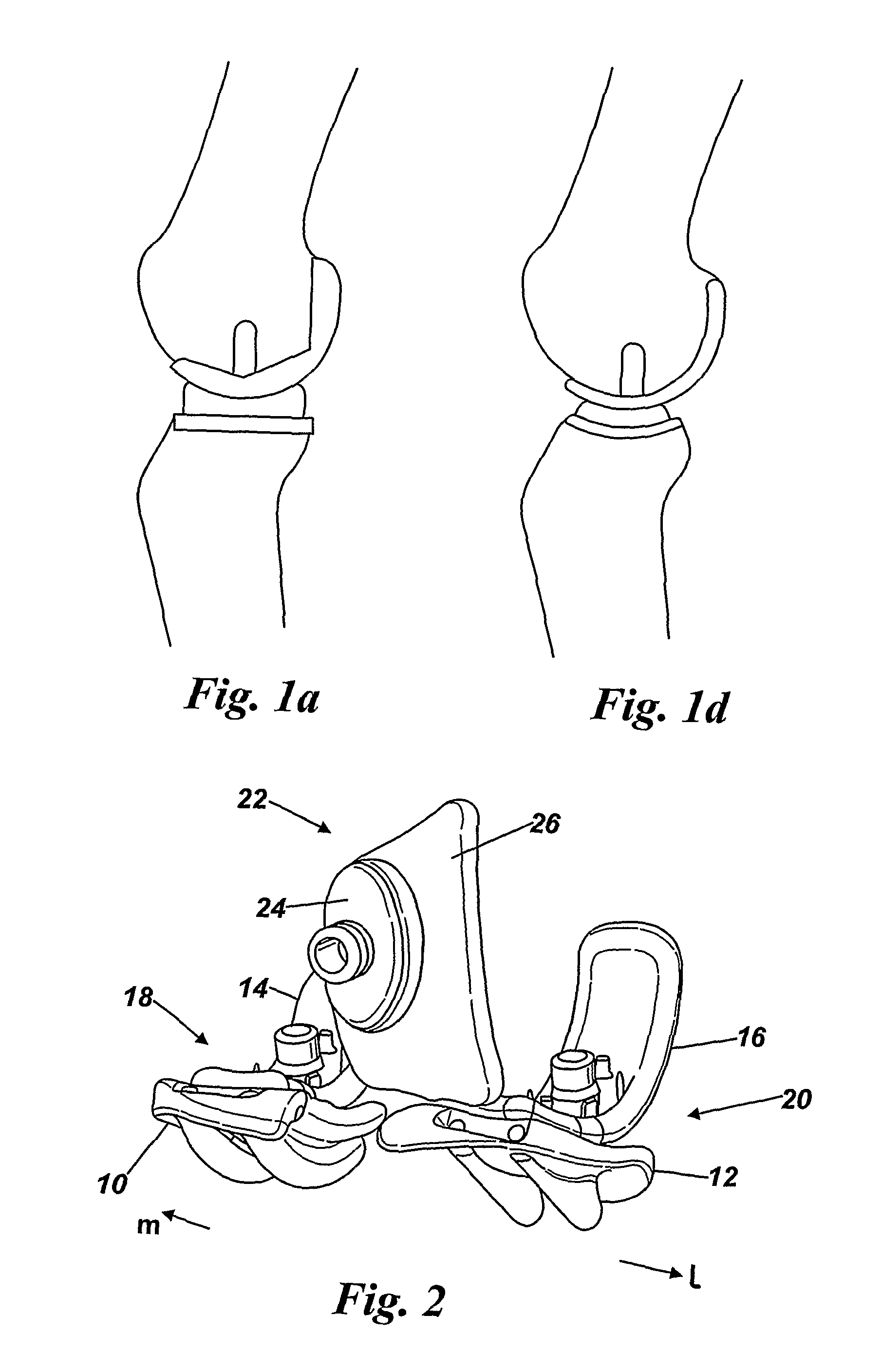Modular knee implants
a knee implant and module technology, applied in the field of knee implants, can solve the problems of not always expected to last a life time of implants, difficult to master surgical techniques, and limited success of devices such as uni-condylar and patello-femoral knee replacements, and achieve the effect of enhancing fixation and minimal siz
- Summary
- Abstract
- Description
- Claims
- Application Information
AI Technical Summary
Benefits of technology
Problems solved by technology
Method used
Image
Examples
Embodiment Construction
[0067]Referring to FIGS. 2, 3 and 4, a modular knee implant set comprises medial and lateral tibial components 10, 12, medial and lateral femoral components 14, 16. The medial tibial and femoral components together form a medial bearing 18, and the lateral tibial and femoral components together form a lateral bearing 20. The implant set further comprises a patello-femoral bearing 22 comprising a patella component 24 and a trochlear component 26.
[0068]Referring to FIGS. 5 to 10, the medial bearing will now be described in more detail. The tibial component 10 comprises a main platform 30 with a pair of securing ribs or rails 32 on its underside 33 and a bearing surface 34 on its upper side. The bearing surface 34 is curved and the underside 33 of the platform 30 is similarly curved so that the platform is of generally uniform thickness.
[0069]As can best be seen in FIG. 6, the lateral edge 36 of the platform 30 is straight over most of its length. The posterior edge 38 is curved, with ...
PUM
 Login to View More
Login to View More Abstract
Description
Claims
Application Information
 Login to View More
Login to View More - R&D Engineer
- R&D Manager
- IP Professional
- Industry Leading Data Capabilities
- Powerful AI technology
- Patent DNA Extraction
Browse by: Latest US Patents, China's latest patents, Technical Efficacy Thesaurus, Application Domain, Technology Topic, Popular Technical Reports.
© 2024 PatSnap. All rights reserved.Legal|Privacy policy|Modern Slavery Act Transparency Statement|Sitemap|About US| Contact US: help@patsnap.com










